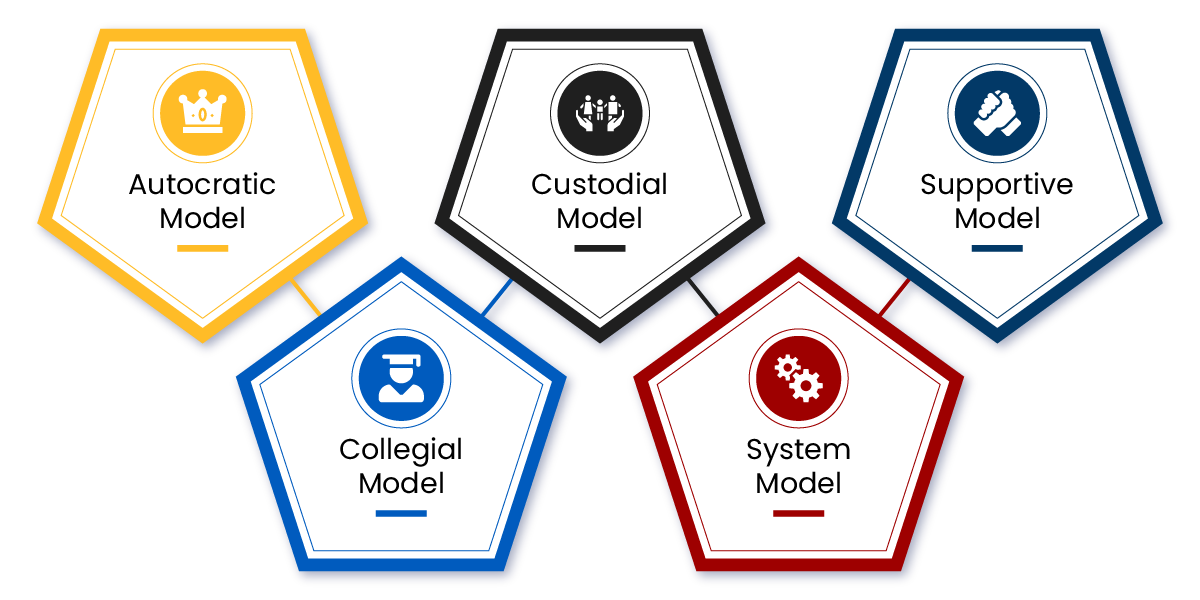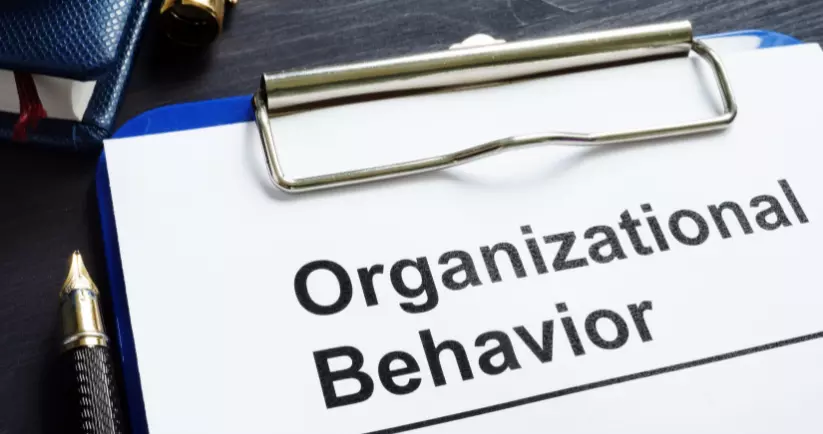What is behavior? It is some response or act that depends on people’s internal thoughts and feelings and external facts that are based on the work as well as the outskirts environment.
Modern organization business directly relates to people from various social and economic backgrounds. It has great significance in today’s business environment. Also, it helps to describe the nature of the organizations and the activities of the people of the organizations.
A detailed study of organizational behavior has a significant need to motivate employees and maintain interrelations in the organization.
In this Blog, we like to share the importance of organizational behavior and how to maintain organizational behavior in the workplace.
What Is Organizational Behavior?
Organizational Behavior is a study of how an individual or a team interacts with the groups. The study of organizational behavior is mainly essential to make an organization’s business more effective. It ensures better job performance, improved job satisfaction, promotes innovation and encourages leadership, etc.
Satisfactory organizational behavior helps management to motivate employees to perform well. It leads to employee engagement and retention, improved training, culture, and more.
As a result, achieving goals in the company’s profit becomes more manageable and simple, which reflects company profit and organizational growth.
There are mainly four elements for maintaining organizational behavior, those are,
- Positive and dedicated people who work for the organization
- A strategic structure defining the organization is Hierarchical or Flat
- Technology Or the systematic work processes
- A positive Work Environment
Importance of Organizational Behavior
The importance of organizational behavior lies in the facts like discovering, and understanding human behavior, creating a positive work environment bringing higher employee productivity, training employees, motivating them to perform better, maintaining an ethical workplace, and building strong relationships between employees and employers. Let’s what is the importance of organizational behavior in the workplace.
1. Skill Improvement
Training, employee skill development, or learning new skills is no more optional nowadays. it is one of the essential tasks that every manager of any organization has to attend. They are normally responsible for the formulation, arranging training, and development, and implementing various strategies for employees.
Skill improvement can be included as the importance of organizational behavior that infers adequate analysis of the values of the employees and the organization. It leads to the behavior of employees toward the engagement and achievement of the organizational goal and objectives.
2. Employee Motivation
Motivation is a feeling which defines the psychological state of a person. It depends on organizational behavior too. How the organization behaves with the employees? Is there any conflict or does a mutual understanding prevail between them? With proper organizational behavior, employers highlight and solve them.
Moreover, employee motivation is the key element for company profit and productivity. It is significant for the organization, as motivated employees ensure increased workplace performance and job satisfaction. Workplace behavior is maintained by employee motivation and a balanced relationship between the employees and the organization.
3. Enhanced Productivity
A good relationship between employees, a supportive work environment, or positive work strategies and related policies leads to the ultimate productivity of the organization. A smooth communicative environment with proper organizational behavior can be the key to enhanced productivity and company profit. Enhanced productivity with company profit can easily be taken as the importance of organizational behavior.
Additionally, with organizational behavior, managers can identify factors to influence employee engagement and productivity. They can develop strategies to motivate employees, create a positive work environment, and foster teamwork and collaboration. Understanding individual and group behavior helps in optimizing productivity levels and achieving organizational goals. Even employees can interact with each other
4. Employee satisfaction and retention
Organizational Behavior (OB) ensures peace and harmony in the organization. It creates a good relationship between the employee and the workplace. It results in employee satisfaction, retention, and productivity.
But the question is how? Proper organizational behavior understands both the employee’s and employers’ behavior, expectation, etc. Even controls some consequences and creates a common field for both the employees and employers. So that they can form a productive relationship within the organization.
5. Effective Leadership
Organizational behavior provides insights into leadership styles, communication patterns, and decision-making processes.
It helps leaders understand how their behavior influences employees and how they can adapt their leadership approaches to maximize employee engagement, satisfaction, and performance.
6. Improvised diversity and inclusion
Organizational behavior emphasizes the importance of diversity and inclusion in the workplace. By recognizing and valuing individual differences, organizations can create an inclusive environment that harnesses the benefits of diverse perspectives and experiences. This leads to enhanced creativity, innovation, and problem-solving.
7. Effective conflict resolution
Conflicts between employees or employees with employers are common in any organization. Organizational behavior equips managers with the skills and knowledge. So that they can manage and resolve conflicts effectively and create a strategic workflow system.
By understanding the underlying causes of conflicts and utilizing appropriate conflict resolution strategies, managers can maintain harmonious relationships and enhance collaboration among employees. They can even use the following models of organizational behavior to streamline the entire workflow process.
The Elements of Organizational Behavior
Organizational Behavior can’t be the same everywhere every time. It depends on certain elements. We are segregating the elements based on people in the organization, workplace structure, updated technology, and a healthy environment.
➔ People
An Organization is incomplete without people. They help organizations in business growth by achieving goals. Quality employees build the internal and social system of the organization that directly relates to the company’s productivity and future growth.
Along with the quality of employees’ activities, people of the organization’s stakeholders and other groups’ positive behavior maintain a positive and supportive work culture.
So managing and treating people well is essential and mandatory. Management must understand the nature of employees and help them to create a better relationship between them and the organization.
A better understanding between the people enhances the organization’s behavior and that eventually leads to improved productivity.
➔ Structure
Besides employee behavior at the workplace, the second essential element of an organization is structure. Structure defines the roles, responsibilities, and relationships of employees working at the organization.
It ensures numerous positions or designations like managers, accountants, administrations, general staff, and more. The organizational structure binds them into a system so they can connect structurally and perform their role in organizational development.
Additionally, a proper organizational structure evades confusion among employees and leads to better efficiency in working there. When employees get work as per their skill and achieve better opportunities attempting the goal, the employer-employee relationship will develop itself. And leads to company productivity.
➔ Technology
In the modern age, one of the most important elements of organizational behavior is technology innovation and further implementation. Technologies like hr management software helps the employees with their essential resources and equipment to bring betterment in their activity, upbringings their knowledge, and more. It does not only help to reduce the employee turnover rate but also leads to company growth and productivity.
Technology doesn’t only supply tools, machines, and other resources, it ensures different methods of accomplishing work, easily. Moreover, It provides a significant role in maintaining work quality and reducing production costs.
In conclusion, in today’s modern world, we can’t complete any task with the bare hand. Technology is just an influencer that builds a correlation among the workers in the workplace.
➔ Environment
The environment is one of the most essential elements of organizational behaviour which is mainly based in and around the organization. These factors affect the employees as they include socio-cultural, economic, technological, political, and legal factors.
A positive environment influences employees’ attitudes and motivates the employee to better engagement, and working conditions in an organization in many ways.
Five Models of Organizational Behavior
The organizational behavior is There are various models and frameworks that have been developed to understand and explain organizational behavior. Here are five commonly recognized models of organizational behavior:

1. Autocratic Model
The ‘autocratic’ means authorization. The autocratic model of organizational behavior ensures a hierarchical structure with a centralized decision-making process by the authorities in an organization.
In this model, the power and control lie with the top management, and subordinates are expected to follow instructions without question. Communication flows predominantly from the top down, and there is limited employee participation in decision-making processes.
2. Custodial Model
Custodial means responsibility, the custodial model is one of the most effective types of organizational behavior where employees feel secure and get benefits through numerous aids like Health benefits, generous payoffs, bonuses, occasional informal meets, etc. There are various ways in this model to keep the employees hooked to the organization.
The primary motivation and organizational support create a sense of loyalty and dependence on the organization, it increases the employee retention rate. However, this model may limit employee autonomy and intrinsic motivation.
3. Supportive Model
A supportive model is somewhat encouraging. Through this model organizations can encourage the employee, to work in a healthy work environment. In this model, the organization provides motivation to employees, and prioritize their view in any decision-making process. It promotes employee well-being and a supportive work environment with cordial manager-employee relations leading to employee engagement, job satisfaction, personal growth, and company productivity.
This model aims to enhance employee motivation, job satisfaction, and performance.
4. Collegial Model
The study of organizational behavior says about one more model, which is Collegial Model. The collegial model describes the community.
The collegial model emphasizes teamwork, collaboration, and empowerment. In this model, the organization is viewed as a community where employees work together towards common goals.
There is a high degree of trust and open communication among employees and management. Decision-making is decentralized, and employees are given autonomy and freedom to contribute their ideas and expertise.
5. System Model
The system model takes a holistic approach, viewing the organization as a complex system of interrelated parts. It recognizes the dynamic nature of organizations and the influence of external factors such as the environment, technology, and market forces.
This model focuses on understanding the interactions and interdependencies among various elements within the organization, such as individuals, groups, structures, and processes.
Also Read:
End Note
In conclusion, organizational behavior is the study and practice that provides valuable insights into how individuals, groups, and structures within an organization behave and interact. Understanding organizational behavior is essential for leaders and managers as it allows them to effectively manage and lead their teams, enhance productivity, and create a positive work environment.
By studying organizational behavior, organizations can improve employee satisfaction and retention, resolve conflicts, navigate change, promote diversity and inclusion, make informed decisions, and foster effective communication. Overall, organizational behavior serves as a foundation for optimizing organizational performance and achieving long-term success in today’s dynamic and complex business landscape.








